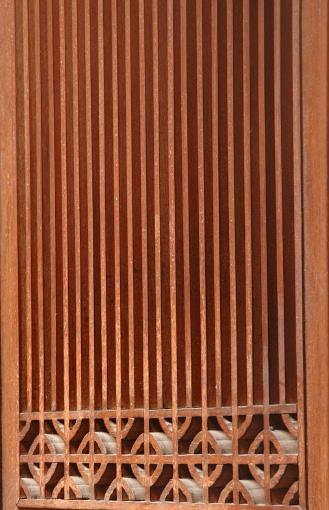
An antique oriental book case is not simply a piece of furniture; it is also a true work of art in both craftsmanship and design. Each piece, whether made from highly valued red sandalwood, rich huanghuali wood or simple bamboo, was expertly finished by skilled hands.
Types of Oriental Book Cases
Oriental antique furniture pieces were traditionally made in three main types, lacquered, hardwood or bamboo. Each style has unique characteristics that make them beautiful, lasting treasures. Although we generally think of book cases as having open shelves, many of the Oriental designs had shelves hidden behind closed doors. The cabinets could be completely enclosed, or have open shelves on top and doors on the bottom section.
Lacquered Book Cases
Antique oriental lacquered furniture was most commonly found in temples, palaces and homes belonging to the wealthy upper-class. There were four basic styles of lacquered design used throughout the Ming and Qing Dynasties which lasted from the years 1368 to 1911. These styles included:
- Carving the lacquer or t'i-hung
- Using lacquer to fill in a design that was engraved into the wood, and rubbing it flat, or miao-ch'i
- Outlining the lacquer, or luo-tien
- Inlaying mother-of-pearl into the lacquer
It is not uncommon to find oriental antique book cases with any combination of these styles.
Hardwood Book Cases
Book cases made of hardwood were most often found in the homes of officials, nobles and other wealthy families. As in the lacquerware, each piece of furniture was made with the greatest care, creating straight smooth lines. Furniture makers would carefully apply many coats of varnish to the wood, giving it a lustrous shine. Many antique book cases have beautiful carvings which were created using both deep and hollow carving techniques. The wood is used in oriental furniture include:
- Red sandalwood
- Zitan
- Sandalwood
- Elm
- Huanghuali
- Nanmu
- Camphor
- Rosewood
- Teak
- Burl
- Yongzheng
- Beech
- Cypress
- Chicken-wing
- Walnut
- Ebony
- Birch
- Hongmu
- Chinese Catalpa
- Oak
- Blue Japanese Oak
- Tieli
Inlaid and Carved Book Cases
Antique oriental furniture very often has ornate inlays or detailed carvings. The inlaid designs are made of any combination of shells and chips of enamel and stone which are very bright and colorful. The stones are often jade, agate or marble. Ivory, horn and amber are also used for the designs. Pieces of ceramic plates, which were made of vibrant colors were also used in the inlaid patterns. Other beautiful inlaid designs were also created from using small pieces of different colors and grains of wood.There were three different methods of carving used on antique oriental book cases. These methods were freestyle carving, relief carving, and negative carving. Much of the furniture carving of the time had common subjects, including:
- Dragons
- Phoenixes
- Flowers
- Ch'i-lina mystical Chinese beast
- Cloud patterns
- Leaf patterns
Antique Oriental Book Case Styles
The following links are to examples of the beautiful oriental book cases of the past.
- A Cyprus Scroll Cabinet Bookcase from Jiangsu Province, Circa 1860
- Tall Chinese Book case, Circa 1850
- Black Lacquer Cabinet from Bejing Provience, Circa 1870
- Red lacquer cabinet from Shanxi, Circa 1800
- More from Danish Country - European and Asian Antiques
- Hand Carved Reproduction Oriental Book Case
- Bamboo, Elm and Lacquered Book Cases, Circa 1800s
The Floating Panel on Oriental Furniture
It is important to remember that wood is a natural product and should be kept away from extreme heat or temperature changes. Most large pieces of antique oriental furniture, such as a book case, were made with the large surface being a floating panel. The panel is framed on all four sides by wooden members. It is normal for the floating panel to contract or expand with temperature changes. If the piece of furniture or is in an area that is dry, the portion of the tongue which is not colored, may become visible as it moves away from the wood member.
When the antique wood is placed into an environment with a higher humidity it will expand and the uncolored portion of the tongue will, once again, be concealed inside the wooden member. If an antique oriental piece of furniture is going to be in a very dry area, it may help to operate a humidifier or to place a glass of water underneath or inside the furniture piece in order to help maintain the humidity level.
Conclusion
Antique oriental furniture gives us a glimpse into the past. The surviving pieces need to be cared for and preserved so they can continue to be enjoyed by future generations.







